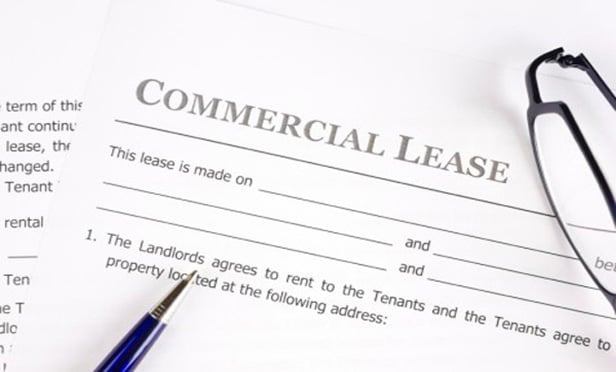Features

Takeaways from the Swift End to <i>Waymo v. Uber</i>
The details might not be quite as dramatic as they were in <i>Waymo v. Uber</i>, but lawyers expect trade secrets to continue to be a fertile source for litigation.
Features

Anti-Forfeiture Statute Saves a Debtor's Exercise of Option to Renew Lease
In a recent decision, Bankruptcy Judge Christopher S. Sontchi addressed the question of whether a Chapter 11 debtor, the tenant under a commercial lease, could exercise an option to renew the lease during the bankruptcy proceedings, even though the debtor was in default under the lease and the lease specified that it could not be renewed if defaults existed at the time the option was exercised.
Columns & Departments

Landlord & Tenant
Section 8 Status Protects Tenant from Eviction<br>Questions of Fact About Acceptance of Surrender
Columns & Departments

Case Notes
Moratorium Invalidated Where Consideration of Zoning Changes Not Planned<br>In Texas, LLCs Cannot Be Made to Pay Attorney Fees<br>No Interaction, No Equitable Tolling
Features

Bankruptcy Venue Reform Bill Introduced
On Jan 8, 2018, Senators John Cornyn (R-TX) and Elizabeth Warren (D-MA) introduced the Bankruptcy Venue Reform Act of 2018, which is designed to prevent forum shopping in Chapter 11 bankruptcy cases, a practice that has resulted in a concentration of bankruptcy cases in a few districts.
Columns & Departments

IP News
Federal Circuit Vacates Noninfringement Decision Finding a Genuine Dispute as to Divided Infringement<br>Patent Trial and Appeal Board Holds Sovereign Immunity No Defense to IPR Petition Brought by Accused Infringer
Columns & Departments

Real Property Law
Punitive Damages for Intentional Encroachment<br>Questions of Fact About Readiness to Perform<br>Issues of Fact Preclude Summary Judgment in Action for Brokerage Commission<br>No Meritorious Defense to Foreclosure Action
Features

The Recent Court and Regulatory Battles Behind the Net Neutrality Controversy
Though it has been a news focus recently, the legal issue of “net neutrality,” or an open Internet, has been a point of contention between Internet access providers and network users since the mid-1990s. Both sides have zealously but unsuccessfully lobbied Congress with multiple efforts to have desired legislation passed. This has left us instead with shifting regulatory actions taken by the Federal Communications Commission (FCC) attempting to address the issue.
Need Help?
- Prefer an IP authenticated environment? Request a transition or call 800-756-8993.
- Need other assistance? email Customer Service or call 1-877-256-2472.
MOST POPULAR STORIES
- The 'Sophisticated Insured' DefenseA majority of courts consider the <i>contra proferentem</i> doctrine to be a pillar of insurance law. The doctrine requires ambiguous terms in an insurance policy to be construed against the insurer and in favor of coverage for the insured. A prominent rationale behind the doctrine is that insurance policies are usually standard-form contracts drafted entirely by insurers.Read More ›
- A Lawyer's System for Active ReadingActive reading comprises many daily tasks lawyers engage in, including highlighting, annotating, note taking, comparing and searching texts. It demands more than flipping or turning pages.Read More ›
- The Brave New World of Cybersecurity Due Diligence in Mergers and Acquisitions: Pitfalls and OpportunitiesLike poorly-behaved school children, new technologies and intellectual property (IP) are increasingly disrupting the M&A establishment. Cybersecurity has become the latest disruptive newcomer to the M&A party.Read More ›
- Abandoned and Unused Cables: A Hidden Liability Under the 2002 National Electric CodeIn an effort to minimize the release of toxic gasses from cables in the event of fire, the 2002 version of the National Electric Code ("NEC"), promulgated by the National Fire Protection Association, sets forth new guidelines requiring that abandoned cables must be removed from buildings unless they are located in metal raceways or tagged "For Future Use." While the NEC is not, in itself, binding law, most jurisdictions in the United States adopt the NEC by reference in their state or local building and fire codes. Thus, noncompliance with the recent NEC guidelines will likely mean that a building is in violation of a building or fire code. If so, the building owner may also be in breach of agreements with tenants and lenders and may be jeopardizing its fire insurance coverage. Even in jurisdictions where the 2002 NEC has not been adopted, it may be argued that the guidelines represent the standard of reasonable care and could result in tort liability for the landlord if toxic gasses from abandoned cables are emitted in a fire. With these potential liabilities in mind, this article discusses: 1) how to address the abandoned wires and cables currently located within the risers, ceilings and other areas of properties, and 2) additional considerations in the placement and removal of telecommunications cables going forward.Read More ›
- Guidance on Distributions As 'Disbursements' and U.S. Trustee FeesIn a recent case from the Bankruptcy Court for the District of Delaware, In re Paragon Offshore PLC, the bankruptcy court provided guidance on whether a post-plan effective date litigation trust's distributions constituted disbursements subject to the U.S. Trustee fee "tax."Read More ›
